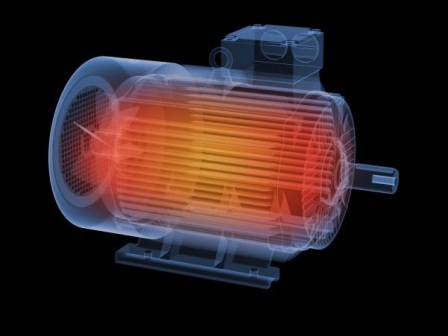The market for electric vehicles is set to exceed $1,000bn by 2030 but potential consumers are still concerned with range, cost and safety. Whilst this draws attention initially to the battery, an equally important factor and unifying component of electric vehicles is the electric motor and its effective thermal management. The electric motor is responsible for driving the vehicle and different manufacturers take varying approaches to accomplish this.
Many manufacturers, especially in China utilise permanent magnet motors for their impressive power and torque density, but these can be susceptible to price hikes in rare-earth materials. For this reason, some OEMs have utilised induction motors or wound rotor motors eliminating the need for rare-earths. However, a popular trend going forward appears to be the adoption of permanent magnet motors using fewer rare-earths such as the new Honda e. Companies ranging from international giants to start-ups have announced the release of fluids specific to electric vehicle motors including Petronas, Shell and Total, to name a few.
Regardless of motor choice, all types of motor generate heat and dispersing this heat is critical, increased temperature of copper windings results in a raised resistance and a reduced efficiency. A motor not operating efficiently can significantly harm the performance and potential range of the vehicle. Permanent magnet motors also risk denaturing the magnetic material above a certain critical temperature rendering the motor useless. In addition to the above concerns, an overheating motor has the potential to damage neighbouring components, at best this can cause component failures and at worst a full-blown fire.
In addition to the type of motor used the cooling mechanism also varies between manufacturers and application. In smaller more open vehicles such as electric motorbikes often a suitably engineered air-cooled motor will suffice, whereas in many electric car applications water-glycol coolant is passed through a jacket around the motor.
Oil injected into the motor itself is also a popular option to maintain optimal operating temperatures and lubrication, but a large factor going forward is how the cooling system can interact with the rest of the thermal management strategies in the vehicle. If the same coolant can be used for the batteries and motors, then this can reduce the complexity and cost of a system, plus excess heat from the motor can potentially be used to heat the batteries or passenger cabin when in cold ambient conditions.

Looking to replace the above currently used strategies are emerging alternative technologies such as refrigerant cooling, phase change materials or even dielectric immersion. How these evolve will depend on motor type, construction and composition.
As manufacturers stop retrofitting internal combustion vehicles and start creating vehicles specifically designed to be electric, some strategies may prevail whilst some fade, and potential for new emerging routes present themselves.
The current and emerging thermal management strategies for electric motors is just one aspect of IDTechEx’s latest report on “Thermal Management for Electric Vehicles 2020-2030”.
Batteries and power electronics are also extremely important when considering the thermal management of a vehicle, with varying approaches taken by OEMs with some trends in progress and some expected in the future, these strategies and future trends are also covered in this latest report.





